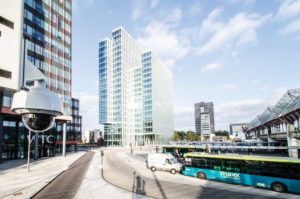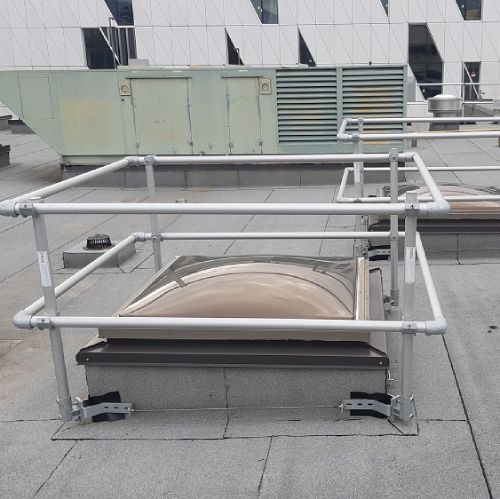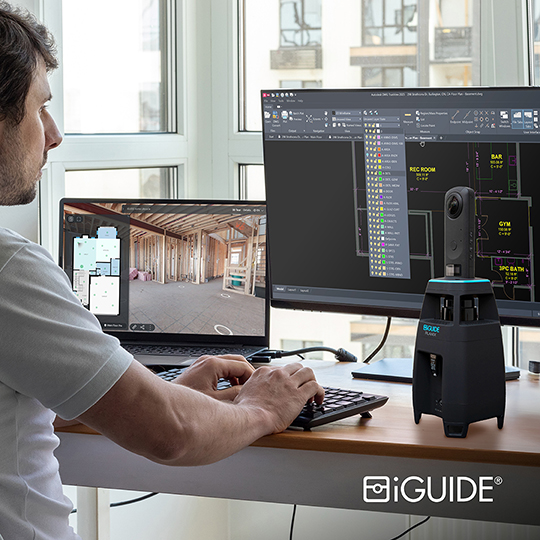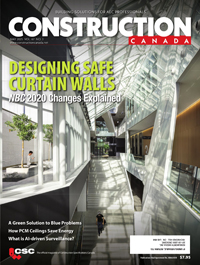Smart cities: building a sustainable future

Data privacy and protection
Once data has been collected, aggregated, analyzed, and utilized, there is a further concern regarding the security of the data being collected and stored. This concern is twofold: one half concerns the privacy of people in public and private settings, and the other concerns the security of stored data which may compromise individual privacy if accessed by malicious actors.
For smart surveillance systems, the capture of people’s faces and bodies is seemingly unavoidable. Not everyone is comfortable having their presence recorded and stored, and there may be legal ramifications if the privacy of the public is not treated properly. To work around this, some manufacturers of smart surveillance systems offer supplementary software which safeguards privacy through dynamic masking of bodies and faces in real-time and recorded video. This means a system can still monitor the coming and going of individuals or count the amount of people in a room without compromising the privacy of those same individuals.
The inverse could also be useful in certain situations, such as blurring the details of a background if sensitive material is viewable from an IP camera. If the video feed or recording is compromised, sensitive private information has already been scrubbed from the camera, affording an additional layer of protection.
Co-ordination between public and private entities
Building and upgrading buildings and cities inherently entails a level of collaboration between public and private entities. Smart lighting systems in cities, for example, necessitate a private designer, contractor, and installer to work in tandem with city staff to create a system which serves the interests of the public. Architects and engineers need to understand the context of their building design in the overall city location. They need to work with city officials responsible for approving building permits, therefore due diligence is required for the same transparent communication, design, and construction methods, and lastly, the approval process with the smart city plan within a city. Some U.S. and Australian smart cities building codes have been put into place for decarbonization and sustainability planning, and Canada also has a plan of action.4
Education and lack of information
Engineers and architects need to know what their options are to offer a higher quality of living for their residents and make their projects more sustainable. Unfortunately, there is uncertainty surrounding the smart technology available to them. Fortunately, there are methods to expand their knowledge. Professional events in their regions give opportunities to learn what is new to the industry and how smart systems are innovating industries.
Professional development is another route, as many engineers and architects must continually develop their skills in their profession for designation requirements. Additionally, the communities and networks of architects and engineers hold a vast breadth of knowledge and people love to share what they know. Harnessing social profiles such as LinkedIn to hear what other professionals are working on and connecting with them offline creates new lines of communication and deepened relationships.
Social inclusion
Initiatives surrounding smart buildings and cities should aim to uplift as many people as possible. This means projects should improve the quality of life for all members of society, instead of a privileged few. For example, if a transit company introduces a mobile app which provides real-time transit information, individuals without access to a mobile device or mobile data plans also need to be considered and included in this initiative. Perhaps Wi-Fi hotspots are built into transit vehicles, or the information from the app is accessible through displays at transit stations.
For a smart building, if an engineer intends to include secure access systems which can be used through a person’s smartphone, they must similarly consider not everyone enjoys the same access to technology, and plan accordingly.
Benefits
Despite all these challenges facing smart buildings and cities, the benefits cannot be overstated. In terms of quality of life and long-term sustainability, smart systems are an essential aspect of future planning for buildings and cities, with numerous applications for all kinds of use cases which can enrich the lives of all city inhabitants.
Smart technology provides several quality-of-life benefits for individual civilians, starting at the simplest aspects of building use: access and comfort. It is important to introduce security and smart technology consultants as early in the design process as possible to be proactive and reduce overall costs of implementing smart systems.







